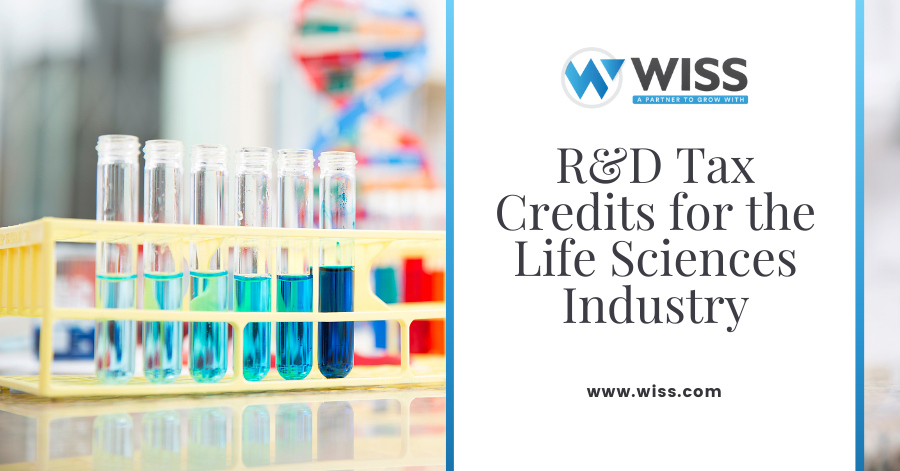Generate cash from your past and future investments in developing or improving products, formulas or devices, or advancing medical and pharmaceutical technology.
In recent years, the Life Sciences industry has been under heavy pressure to drive innovation in an environment of escalating R&D costs, increasing scientific complexity and enhanced regulatory scrutiny.
If your company has worked to develop new or improved pharmaceuticals or medical devices, formulas or technology, you may be eligible for federal and state R&D tax credits equaling up to 25% of qualified spending. If your company is financing such activities outside of the U.S., the incentives may be even greater.
You can benefit from R&D tax credits even if you’re not paying income tax now; many states will pay you the value of your credit or allow you to sell or transfer it for cash, and state and federal credits may be carried back to earlier—and forward to later—tax years.
Is Your Life Sciences Company Eligible?
Your company may qualify for R&D credits if you pay the following types of employees or contractors to develop or improve your product, process or technology:
- Analytical Scientists
- Formulations Scientists
- Clinical Trial Managers
- QA/QC Specialists
- Process/Manufacturing Chemists
- Lab/Maintenance Technicians
- Production Technicians
- Pharmaceutical Development Associates
- R&D Laboratory Associates
- Pharmaceutical Operations Associates
- Clinical Support Specialists
- Pharmacology Associates
- Research Associates
- Drug Safety Specialists
- Research Informatics Specialists
- Discovery Biology Specialists
- Tooling Manufacturers
- Regulatory Operations Associates
- Laboratory Managers
- Formulation Development Associates
- Preclinical Associates
- Materials Management Coordinators
- Drug Discovery Specialists
- Biometrics Associates
- Regulatory CMC Managers
- Artificial Intelligence
- Virtual Reality
- Augmented Reality
Which Activities Qualify for the R&D Tax Credit?
Examples of qualifying activities include:
- Designing and formulating new drugs and therapeutics
- Designing and developing new or improved medical devices
- Developing or improving drug delivery mechanisms
- Developing new or improved testing and analytical methods and procedures
- Identifying molecular targets and indications
- Testing therapeutic agents and applications
- Performing animal tissue testing
- Designing or conducting clinical trials
- Performing long-term safety and pharmacovigilance studies
- Researching drug-drug interactions and relative efficacy compared to other drugs
- Investigating potential new indications and/or new patient populations for existing drugs
- Developing new or improved manufacturing processes
- Ensuring that product requirements and specifications adhere to FDA and industry standards
- Automating processes using computer/data technology, AI, or robotics
- Creating prototypes
- Developing software
Orphan Drug Credit
A lucrative additional credit equal to 25% of qualified clinical testing expenses, the Orphan Drug Credit is available to companies who perform clinical testing on orphan-designated drugs before the date of FDA approval. Qualified expenses include wages, supplies used during clinical trials and payments to contract research organizations or contracted individuals.
Your efforts do not have to succeed to qualify for the R&D tax credit. And you don’t have to be trying to revolutionize the industry to qualify. Attempts to develop incremental, evolutionary product and process improvements are eligible, as well.

 Previous
Previous


